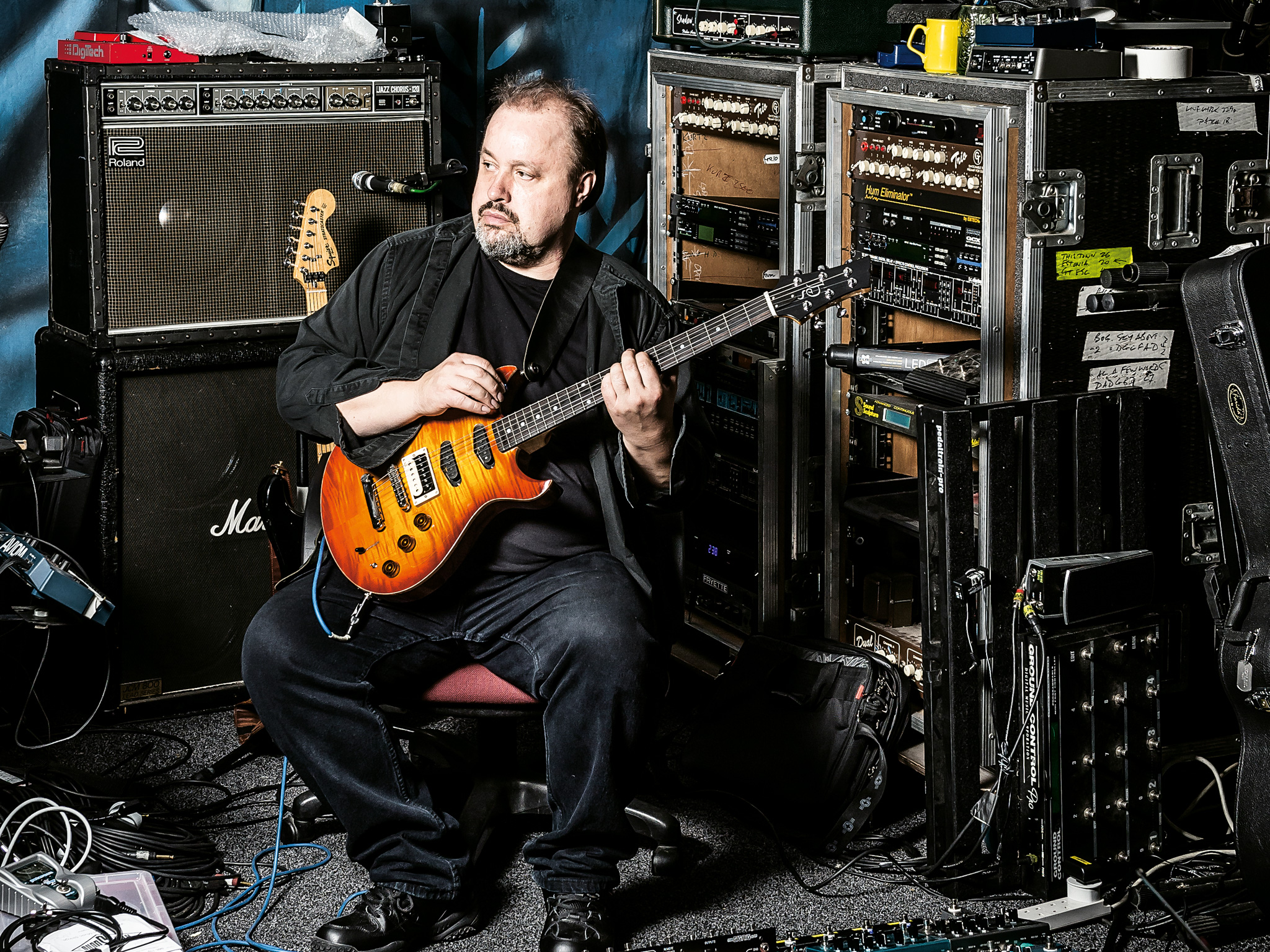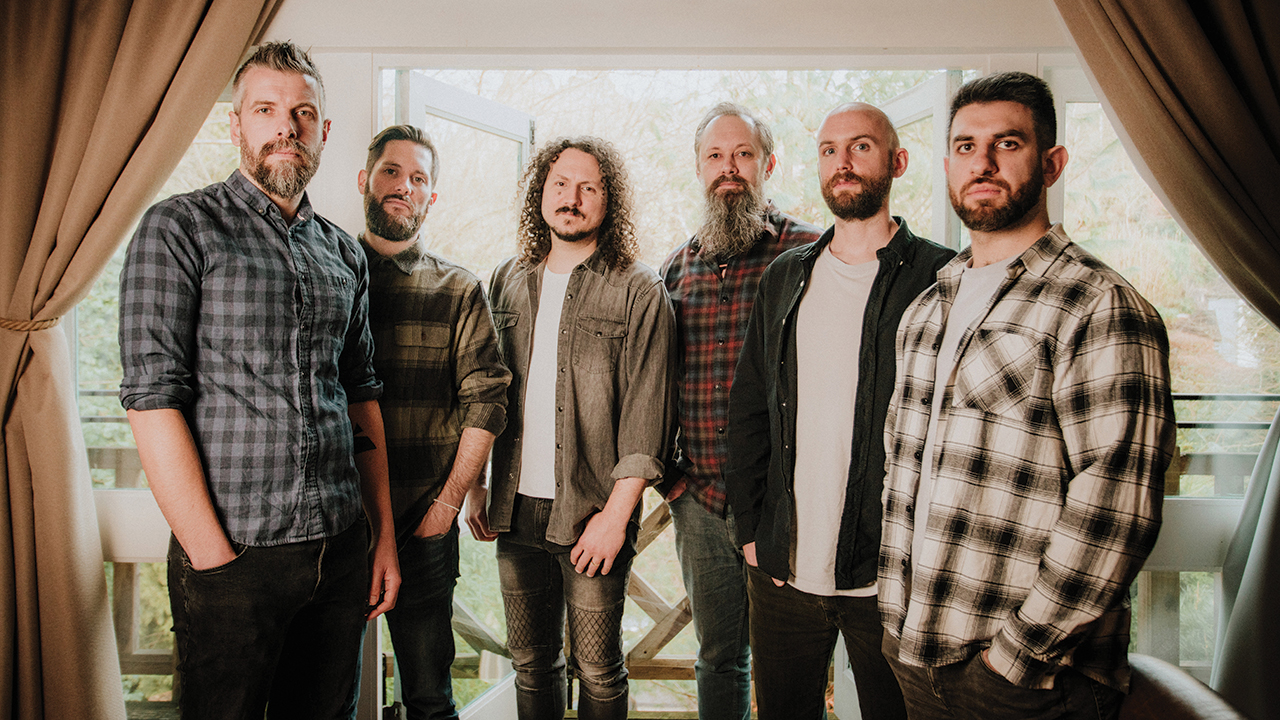Ghost Stories: Marillion's Rothery Goes Solo
“I think of this album as a guitarist’s revenge!" says the Marillion guitarist of new record The Ghosts Of Pripyat.

There have been ever-circulating rumours of a solo album from Marillion guitarist Steve Rothery for the best part of 30 years. Back in the mid-1980s, when the band were caught in the maelstrom of Top 10 singles, appearances on Top Of The Pops and substantial world tours, their label had been open to his suggestion of releasing one. Yet with tensions in the band starting to build and niggle, Rothery reasoned that it probably wasn’t worth the bother.
“Both Fish and I were pitching the ideas of solo albums to our EMI guy, Hugh Stanley-Clarke, and he seemed to be more interested in mine than Fish’s,” laughs Rothery at the memory. “It caused a little bit of grief and would probably have blown over but, for the stability of the band, I put the idea on the back-burner. Later in the 90s, I was approached by Miles Copeland to make an instrumental album for his No Speak label when we were recording Brave. I think he offered me $20,000 to make it, which I thought I could do, but I realised that I’d rather work with another singer and lyricist and do something a bit different. That turned into the first Wishing Tree album.”

There would be another Wishing Tree album in 2009 and, despite being well-regarded, they did have a folk-rock element that was far removed from the type of blissful solos that had made Rothery’s reputation. Although he retained a desire to make an album that matched those expectations, the timing over recent years had never been right. There were lengthy Marillion writing and recording sessions, plus tours that limited his time and motivation. It was only an invitation for him to perform at the International Guitar Festival in Plovdiv, Bulgaria at the end of last year that provided the required impetus.
“I’ve been talking about doing a proper solo album for a long time and this was exactly the right time,” he says. “So the material was sketched out just for that festival really. I was thinking about which path to take with it. You know, should I write songs like The Wishing Tree and then find the right voice and lyricist? But I’d just been to see Camel play The Snow Goose at The Barbican and I loved it. I mean, I’m a huge Camel fan anyway but remember thinking that at no point did I miss there not being vocals. So that gave me the confidence to press ahead with it as an instrumental concept.”
Rothery had been working with Mr So & So guitarist Dave Foster to put together enough music to perform at the festival, but with the organisers increasing the set length from 45 minutes to an hour and a half, there was a certain amount of mild panic as Rothery realised he needed to drastically change his plan.
“My original idea was for Dave and I to just noodle over a laptop playing some loops but when they increased the time of our slot, I thought that really wasn’t going to swing it,” he chuckles. “So I thought about the band that I wanted to put together. I’d worked with Leon Parr [drums] in the past and I rated him very highly. Dave played a couple of gigs with The Reasoning and I’d gone to watch him. On the same bill were Panic Room and I remember that Dave and I watched their bassist Yatim [Halimi] play and turned to each other and agreed that if we put a band together with Leon, Yatim would be perfect. So it’s just an amazing chemistry.”
That gig in Plovdiv was recorded, ostensibly with the idea of using some footage as online clips to try to promote a proposed studio album. But with the concert being such a success and the captured performances of a high quality, Rothery was easily persuaded to release it commercially.
Sign up below to get the latest from Prog, plus exclusive special offers, direct to your inbox!
Those releases also served as a useful way of generating interest in his solo studio album, The Ghosts Of Pripyat. With the band line-up secured, and with Riccardo Romano joining on keyboards, Rothery recalls that the writing sessions came naturally, especially when compared to the often laboured and elongated creation of a Marillion album.
“There were a few ideas that I’ve had for a little while but apart from those bits and pieces, Dave and I just had a couple of afternoon writing sessions,” he reflects. “We share a musical vocabulary, so the whole process was very painless. It’s like the musical equivalent of finishing each other’s sentences really, so compared to the speed that Marillion work, it was quite different.
“Often with Marillion, you tend to find that you come up with lots of great ideas but it’s a little bit like getting things past a committee. That’s especially the case if something isn’t to someone’s musical taste, or if it’s something that maybe doesn’t spark Steve [Hogarth] to sing a lyric over it, and it reaches a bit of a dead end. That’s a shame, as some really good ideas get left by the wayside. But working with Dave in this way was effortless. He’s one of my oldest and best friends, so we have a really good laugh doing it.”
One of the more striking facets of the album is that there’s a return to the ‘classic’ Rothery guitar sound that enlivened countless Marillion tracks – such as Easter, Kayleigh and Sugar Mice – which has become a relative rarity on recent albums. With Marillion constantly seeking out fresh musical directions and dynamics, it’s fair to say it’s a sound that has been sacrificed to ensure honest progress. It’s something Rothery is aware of and appears to be content with.
“I think of this album as a guitarist’s revenge,” he jokes. “This is very much a guitar-based album and I am of course in a band with two keyboard players. So there are some heavier riffs that again maybe wouldn’t get past the committee in Marillion. There are still bits and pieces with Marillion these days, like the solo in Gaza, which I think works very well, but the guitar isn’t given the same role that it once had. But that’s kind of how it is being in a band really, so this was refreshing.
“It’s also about how interesting you find the chord changes and that can inspire you. So with this, I was keen to have some changes that were really nice to improvise and find melodies from. There are a couple of tracks that were recorded live in the studio – the title track and Summer’s End. There are no overdubs and they were recorded as they happened. So it shows the calibre of musicians, and considering there’s a fair amount of improvisation that goes on as well, you need people who really are on their toes. They’re all really nice people with great senses of humour and everything we’ve done so far has been a real pleasure.”
Part of that pleasure was recording at Peter Gabriel’s Real World Studios in Wiltshire. With photographer and artist Lasse Hoile (who has created the album’s cover art) also joining them to gather material and film a ‘making of’ documentary, Rothery remembers that those days were both fruitful and hugely enjoyable.
“It really is an amazing studio,” he effuses. “I mean, if you listen to the drum sound on Summer’s End, they sound fantastic, and that’s due to the acoustics of the room and the quality of the equipment they’ve got there. There’s the very best of everything, which you would expect from a perfectionist like Peter, all set in a completely bonkers huge room. The only thing you have to get used to is that he built a studio next to an Intercity 125 line, which starts up at about six in the morning, so earplugs are a necessity if you want to sleep!”
The Ghosts Of Pripyat is out now. For details, see www.steverothery.com
